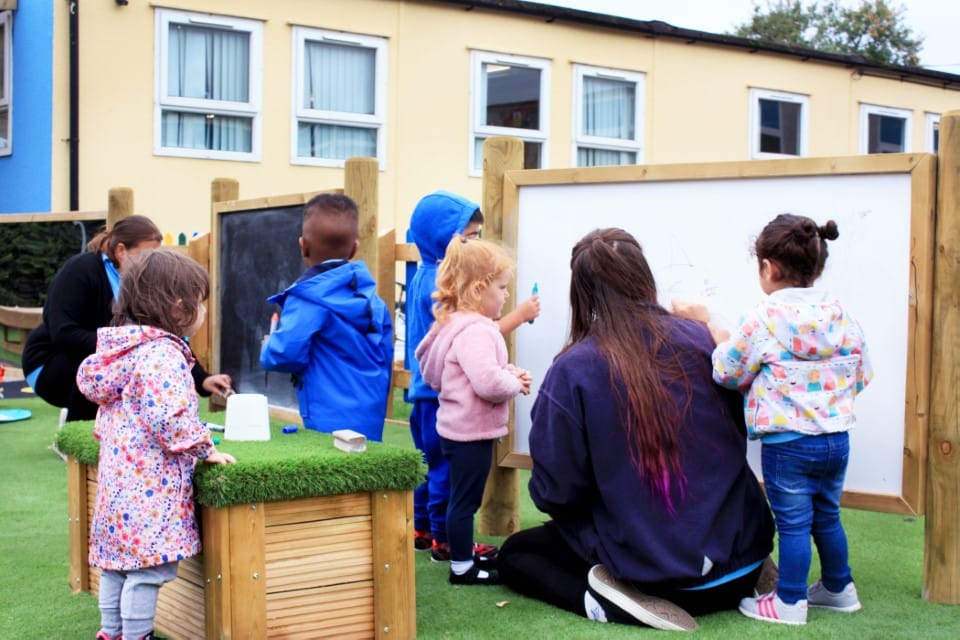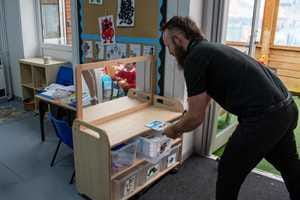
Company News
School-based Nursery Grant Application Walkthrough!
Wanting to apply for the School-based Nursery Capital Grant, but you're unsure on where to start? In this guide, we'll walk you through each step of the application process and what you need to do!
Before we dive deep into the process, it's important to note that we ARE NOT associated with the Department of Education. Even though we have a fantastic blog answering the most frequently asked questions about the SBN grant and a general overview of the grant, we are only a designer and installer of indoor and outdoor environments for schools and nurseries.
If you have any questions regarding your specific situation, then we'd recommend reaching out to the DfE via the Customer Help Portal.
The School-based Nursery Capital Grant Video
We know how hectic an average school day can be, which is why we've created this handy video guide to explain all the information included within this blog!
Make sure to share the video with your colleagues to help them get a quick understanding of everything relating to the SBN grant of 2025/26 today!
Applying for the School-based Nursery Grant
Before you begin applying for the fund, it's important to keep in mind these points:
- The Department of Education (DfE) will review your application and will either approve or decline it. Submitting the application DOES NOT automatically qualify your school for the grant.
- You must be eligible to receive the grant in the first place. To learn more about eligibility, make sure to read our Ultimate FAQ on the School-based Nursery Grant.
- The DfE wants schools from deprived areas to apply for the grant, with a school's disadvantage making up 50% of the total scoring during the assessment of applications.
- The process of gaining your grant can take between 6-9 months, making it one of the longer grants to apply for.
- You can only apply if you are a primary-phase school in England that is either a state-funded school that already offers some form of early years education, or a maintained nursery school looking to expand your nursery provision on your school premises.
SEN schools and pupil-referral units are unable to apply for phase two of the SBN fund, however phase three may allow these types of schools to apply.
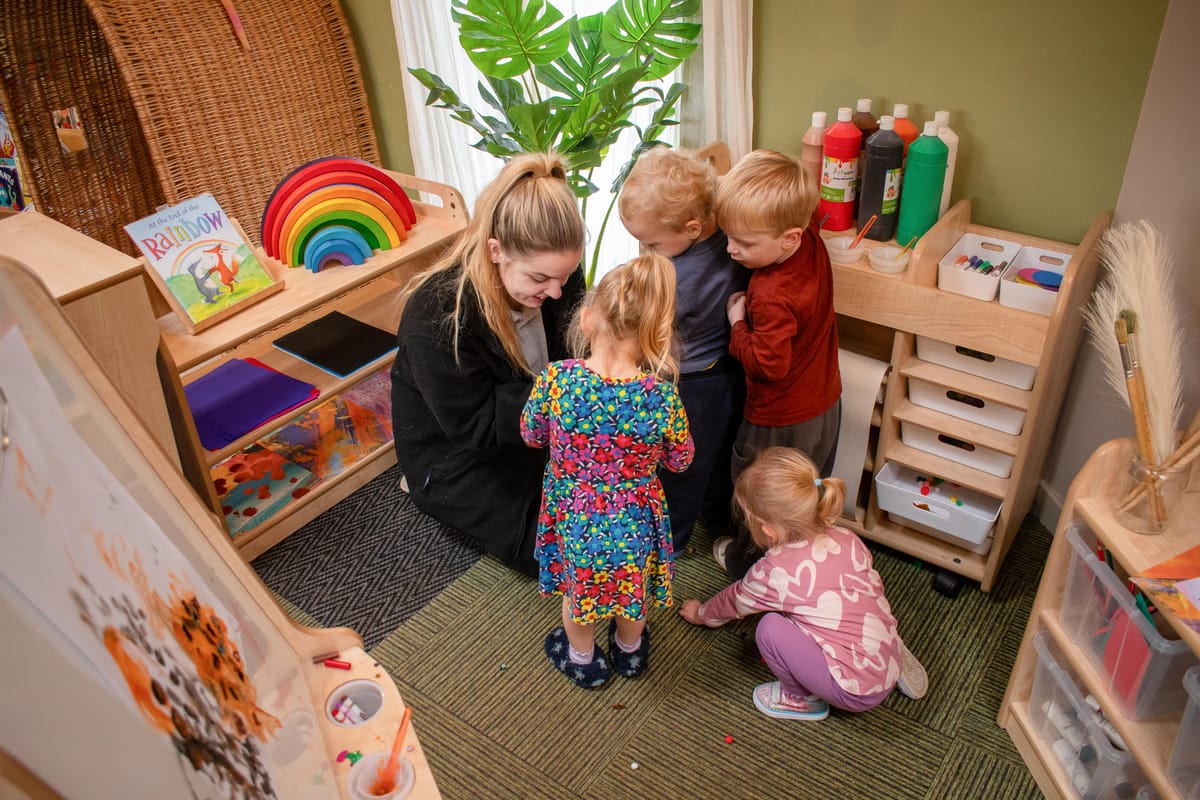
Alongside this, any schools that were successful during phase one are unable to reapply during phase two. Despite this, the DfE has confirmed that successful applicants of phase one will be able to take part in phase three, so stay tuned for that!
Step 1: Reading Materials
There's no point in applying for a grant when you know nothing about it, and the Department of Education are well aware of this!
It's already been stated by the DfE that any application that doesn't display a strong understanding of the grant and/or the process will be automatically rejected.

To avoid your application being rejected, we would recommend checking out the following reading materials:
- Guidance for School-based Nursery Capital Grant 2025 to 2026 (by Department of Education)
- Establishing school-based nursery provision (by Department of Education)
- Phase 2 of the school-based nursery programme: Everything you need to know (by The Education Hub)
- The Ultimate School-Based Nursery Capital Grant FAQ for 2025/26 (by Pentagon Play)
- How to Access Phase 2 School-Based Nursery Funding (by Pentagon Play)
By reading these documents, not only will you have a stronger understanding of the School-based Nursery Grant, but you will be able to differentiate your application from those around you by displaying a stronger drive to learn everything you can about the process.
Feel free to do more of your own research and make use of all the information available to you, as the more you learn and understand about the grant, the better your chance of being accepted.
Step 2: Gather Evidence
Once you've understood what the grant is all about and have decided that it's suitable for your school, the next step is starting to gather the evidence that is required for the application.

The DfE wants all applicants to carry out key extensive preparation steps to help with speeding up the approval process. According to the Department of Education, all schools should have:
- Approval from their Local Authorities
- Plans for any consultations that are required
- Floor/site plans with detailed cost breakdowns and risk registers
- Evidence showcasing the demand for childcare places in their local community (parental surveys, waiting lists etc.)
- Affordability tests that demonstrate financial sustainability from governing bodies and trust boards
- In-depth quotes and supporting documents that showcase the cost of pieces of furniture/play equipment
Compared to phase one of the SBN Grant, phase two is a lot more flexible in terms of delivery, but a lot tougher in terms of evidence. For schools to be successful, they need to demonstrate that they have taken every step possible to ensure that the project is needed and will be executed successfully!
The more evidence you can gather to support your case, the higher the chance you will have of being successful. We've always recommended that our customers create a folder and store all of their evidence inside it. This folder can always be added to throughout the entire process and it avoids any last-minute tasks of locating months-old quotes!
Step 3: Fill in the Phase 2 Template Application Form
With all of your evidence in hand, the Department of Education recommends that schools fill in the School-based Nursery Capital Grant template application form. It's important to note that this form IS NOT the application that will be submitted.

So, why is it so important to fill in? The questions asked within the template are designed to help schools gather the necessary information for the application and understand more about the application process.
Just as the Department of Education have done, we would recommend that all schools interested in applying for the grant to fill in template to ensure that they have all the relevant information ready for applying.
You can download the official template application here.
Now that we understand the importance of the template, let's delve deeper into each section and how schools should be answering each question.
Section 1: Eligibility Criteria
As we mentioned at the beginning, the School-based Nursery Grant is only available to schools who are eligible for the grant. To ensure that your school is eligible for the grant, the Department of Education included a simple checklist within the template application to help you know if you can apply.
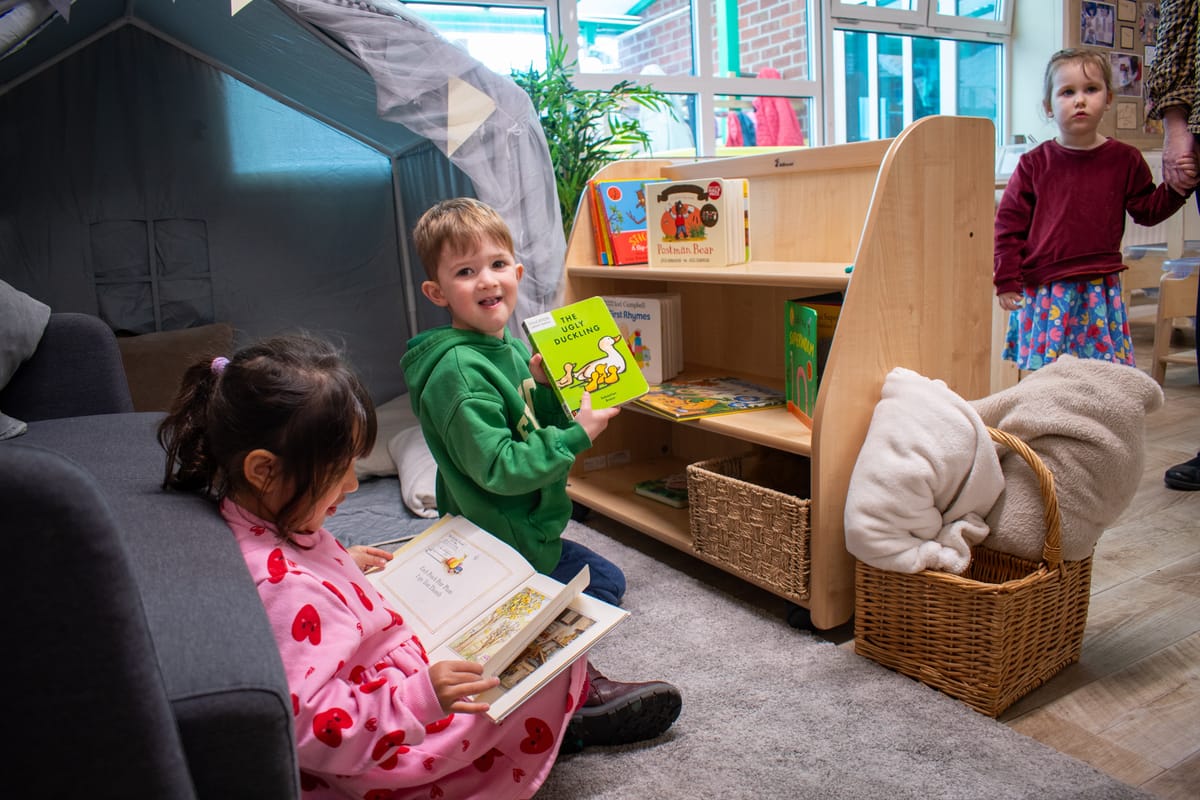
Below are the listed requirements that a school must meet. Schools must meet ALL of the following:
- Your school did not receive the funding through the School-based Nursery Capital Grant in 2024-25 (phase one).
- Your school-based nursery should aim to result in a net increase in the number of childcare places, taking into account any pre-existing provisions or services delivered by external providers at the school.
- Your project can be successfully completed without exceeding the £150,000 funding provided by the DfE.
- Your school-based nursery will be operational and offering new childcare places before September 2027.
- Your school based nursery must either be located on a primary-phase school site that already offers early years education (such as a reception class), or be part of a maintained nursery school site.
- You have written permission for the landowner (e.g. local authorities, foundations/trusts, religious bodies) to use the land for the project and establishing a nursery provision.
- You have discussed your project with the Local Authority's Planning, Place and Provision (PPP) team and the Early Years (EY) lead. In addition, you have all received formal approval for key aspects such as capacity. Your school will also upload a copy of the local authority approval form with your application.
If your school meets all of this criteria, then congratulations: you're eligible to submit an application! Carry on reading to discover how to approach the questions posed by the DfE and what techniques you can use to improve the chance of being accepted.
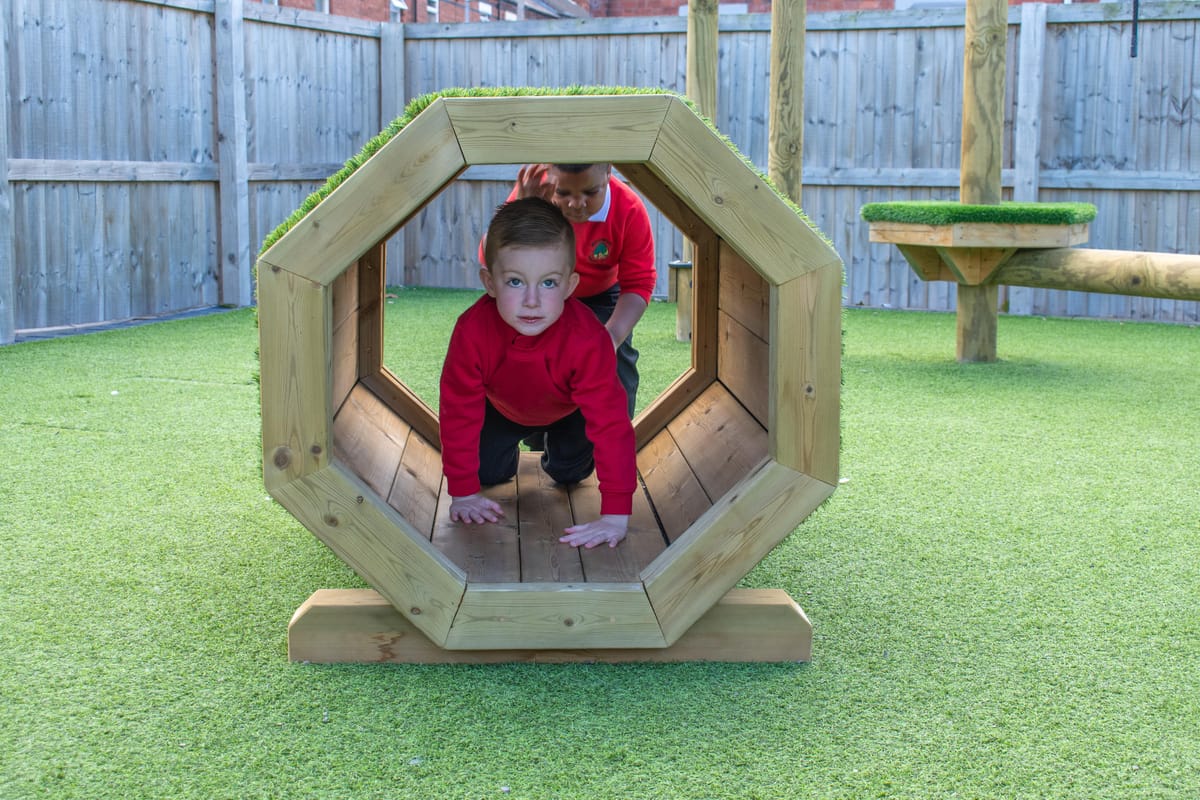
If you don't match at least one of the criteria listed above, then sadly you are not eligible for this years grant. However, that doesn't mean it's over for you! If you're still interested in opening a school-based nursery, then you can register your interest via the online application service.
Section 2: About your School/Trust
For this section, the Department of Education are wanting to gain a stronger understanding of your school and who is the correct person to send all relevant communications to. Information provided within this section will not be assessed by the DfE, meaning that this section will not influence your chances of being approved.

When you sign into the Online Application Service via your DfE account, you'll be asked to confirm the organisation you are applying on behalf of. Once confirmed, the service will then automatically retrieve your contact details and ask you to confirm whether or not you are the bid coordinator. Below is what happens depending on your answer
If you say yes:
The webpage will then ask you to provide the following information:
- Your job title
- Your phone number
Make sure to double check the information you are providing is correct and accurate as once you submit this information, it becomes a difficult task to amend the information and can impact the speed of how quickly your application is processed.
If you say no:
The webpage will then ask you to provide the following information about the bid coordinator:
- Their full name
- Their job title
- Their phone number
- Their email address
If your unsure about who the bid coordinator is at your school, speak to a senior leader and try to gather the information required. Make sure to write all of their information within the template application so you never lose it and can easily copy and paste it over.
Questions
After you've provided the relevant information on the bid coordinator (or yourself), you just need to provide a couple of answers to the following questions:
- Does your school have an existing nursery already operating on site? - You can only choose from "No", "Yes - school, governor or MAT-led" or "Yes - PVI or childminder-led".
- Indicate current 2025 to 2026 academic year nursery capacity. If you do not have an existing nursery, please enter 0 for each. - For this, you'll need to provide a numerical value for how many children you have under 2 years old, 2 years old, 3-4 years old and total capacity.
Again, make sure that the information you provide here is accurate as it helps the DfE understand more about your current position and if any additional steps are needed to help you secure your funding.
Section 3: About the Project
Similar to the previous section, section 3 is not assessed. This section is designed to help the DfE understand more about your proposed project and if any significant change approval or planning permission is needed.
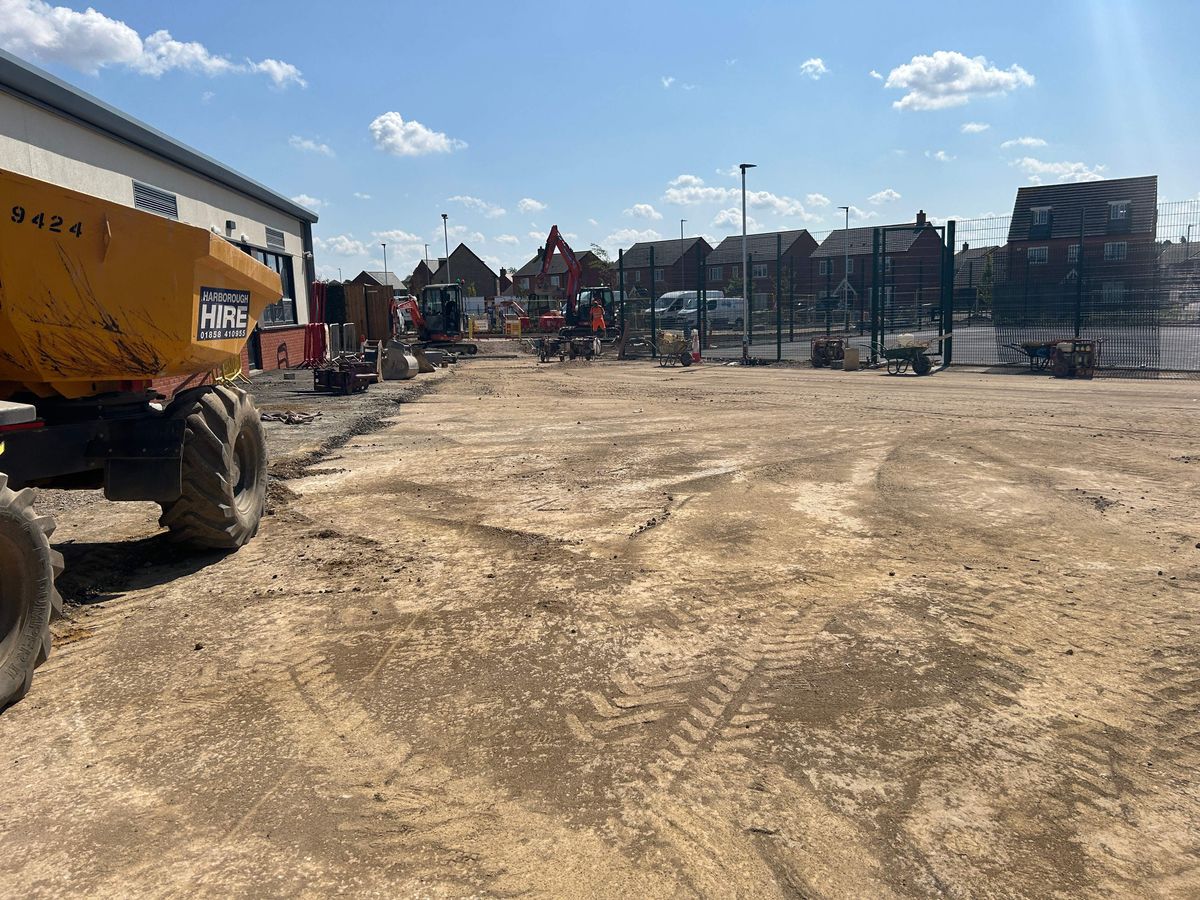
With that out of the way, lets look at the questions in more detail!
What type of project is it?
You're given a total of 6 choices to select from. You only need to choose one of the following:
- A new build (Constructing an entirely new standalone building or facility)
- An extension (Adding a new space to an already existing building)
- A remodel (Reconfiguring an internal space without making any structural changes)
- A refurbishment (A general improvement of existing spaces without making any structural changes)
- A heavy refurbishment (A series of extensive upgrades that involve structural changes and full system replacements)
- A refresh (Only making cosmetic improvements)
Remember, you can only pick one option, so select the option that best describes what your project will mainly entail. If you need further clarification on what is classified under each option, then make sure to read Annex B of the School-based Nursery Capital Grant 2025 to 2026 Information document.
Are there any potential conflicts of interest?
This question requires a free text answer, meaning you can type whatever you feel best suits this section. Just remember that you have a maximum of 400 words, so keep your answer concise and accurate.
For this answer, think about your relationships with everyone involved in the project and if they have any personal or financial interest in the project that could influence your decisions.
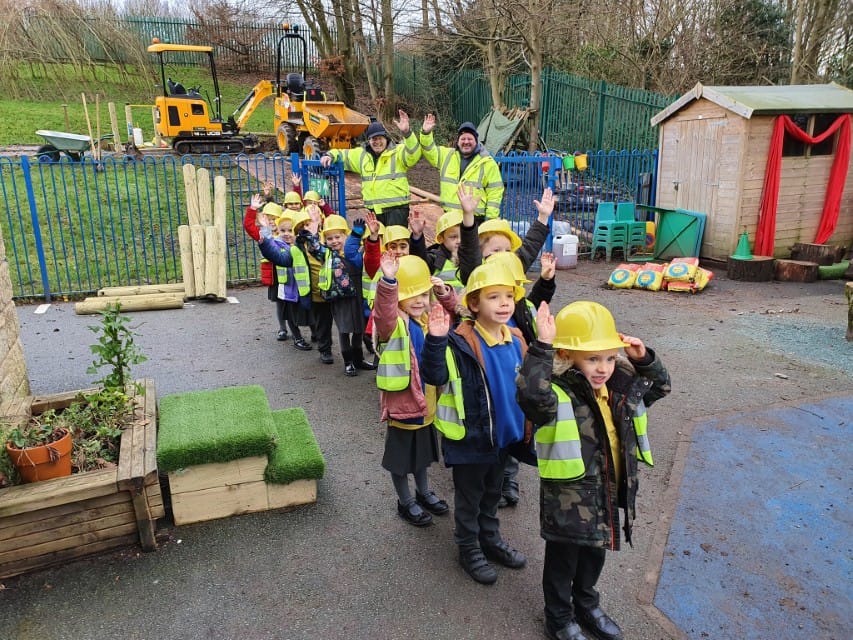
A great example could be hiring a contractor who is also on your school board. As the contractor has personal and financial ties to the school, this would be classified as a conflict of interest. Here are a few more examples:
- Using a technical advisor who has a financial stake in a company that will benefit from the funding.
- Receiving money from another grant that requires outcomes which might clash with this funding.
- A staff member's family business supplying services to the nursery with funding.
Make sure you are completely transparent with this question as the Department of Education will look into your ties with those involved in the project and if you are found to be lying, you grant can be taken from you and you could even be banned from further funding opportunities.
Will your nursery require any of the following?
Providing three possible answers, you will have to choose one option from the following:
- An update to an existing Ofsted early years registration
- A new Ofsted early years registration or registration with a Childminder Agency
- None of the above - your nursery will be exempt from Early Years registration
If your school already has an Ofsted early years registration, but you need to update it due to expanding, changing premises or altering what you offer, then you will most likely select the first option.
Option two should be selected if you're working under a Childminder Agency or you currently don't have an Ofsted registration.
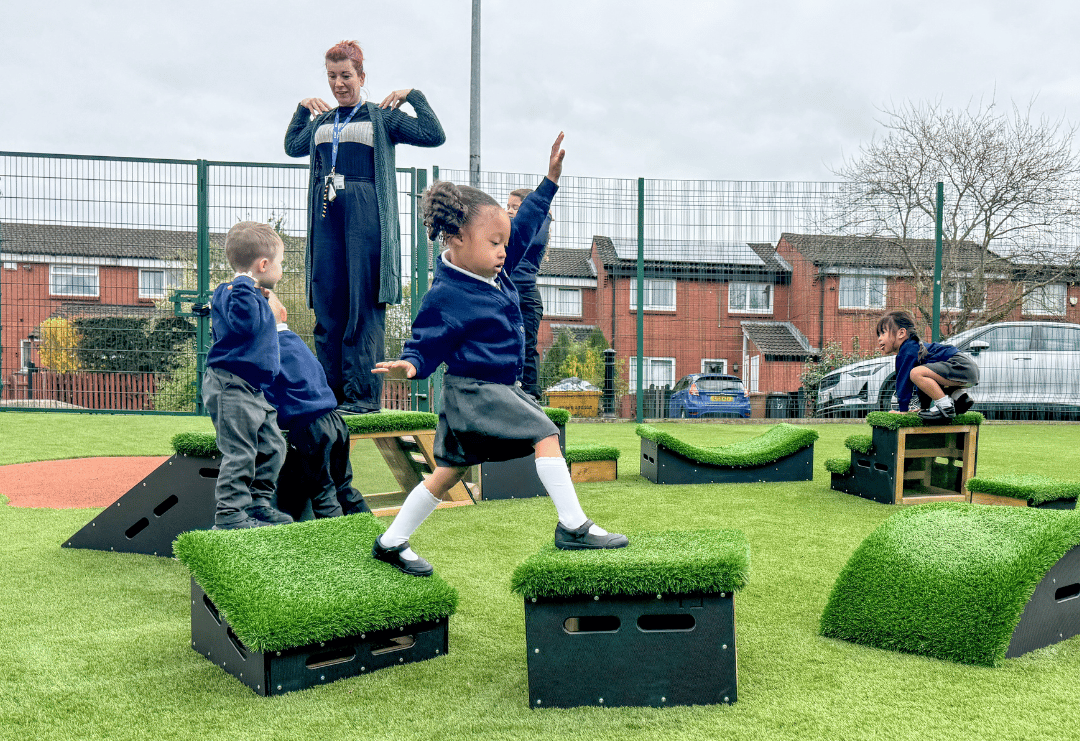
The last option should only be selected if the school-based nursery will be covered under the school's existing registration. For example, maintained schools and some academies can be exempt if their nursery provision is inspected as part of the whole school.
Project timeline information
The Department of Education requires all applicants to be able to provide the following:
- The start date of the project - the date in which you intend trade(s) to start on site doing the work.
- The end date of the project - the date of when all trades people have completed the required work for the school-based nursery to be completed.
- The date when the nursery will be operational - the date on which the nursery will officially be open for pupils to attend.
To get the most accurate dates, we would recommend working closely with all those involved in the project and try to get dates off everyone. If the company is well-experienced, they will be able to give you an accurate date of when they expect to complete their works.

Alongside this, work with a project manager to get accurate estimates of when your work will be completed. Don't worry if the date ends up being slightly off, as this is more of an accurate estimate than a prediction or guess.
Will you be staggering the availability of childcare places across 2026-27?
Similar to the "Conflicts of Interest" question, the answer required for this question is free text, meaning users can write whatever they feel is relevant to the question.
For this answer, try to think on whether you will be opening all of your nursery places at once, or whether you'll phase them in gradually over the 2026-27 school year.
The question also specifies that if you say "yes", you will need to provide details on the nursery capacity at each stage of the rollout, along with the dates.
How will the nursery provision be delivered?
This question is simply asking about who will actually be responsible for running and managing the school-based nursery.
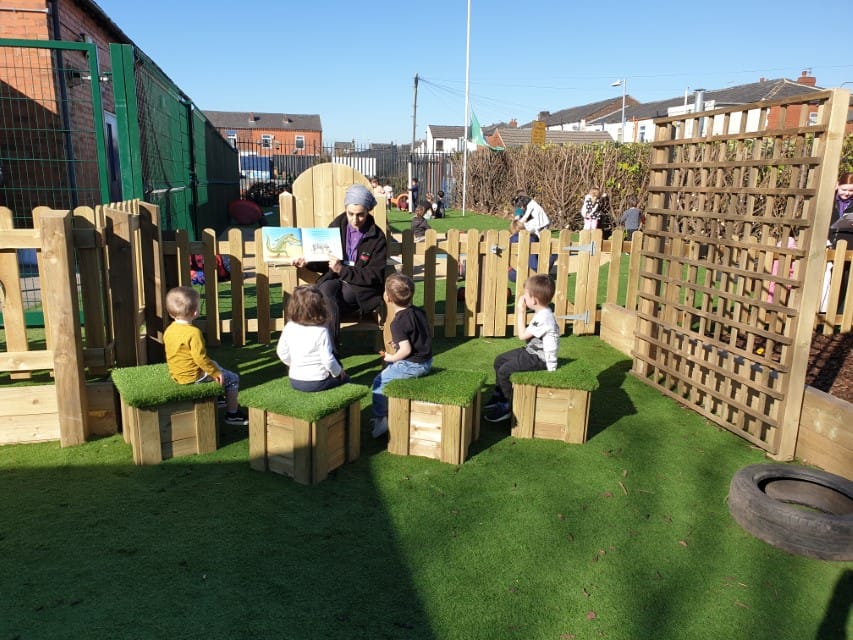
The DfE are wanting to know the governance/ownership model of your provision. The options you can choose from include:
- School-led (meaning the nursery will be directly managed and delivered by the school itself)
- Multi-Academy Trust led (meaning if your school is a part of a MAT, the trust will oversee and run the nursery)
- Governor-run (meaning that the school's governing body takes responsibility for the nursery)
- Private, Voluntary or Independent (PVI) provider-run (meaning an outside organisation is contracted to deliver the provision on school premises)
- Childminder-run (meaning a registered childminder (or a group of childminders) delivers the nursery provision in their own setting or potentially on school premises).
It's important to note that if you select the "PVI provider-run" or "Childminder-run" option, the DfE will ask for the following details:
- What is the name of the PVI or Childminder?
- Provide a contact name
- What is their phone number?
- What is their address?
- What is their email address?
Make sure that all the relevant fields are filled to avoid any delays in processing your application!
Is planning permission required for this project?
Another simple question! The Department of Education is asking if planning permission is required for you to build your school-based nursery. All you have to do is select one of the following options:
- Yes
- No
If you have selected "yes", you will be asked further questions regarding the planning permission. The first question will be asking you at what point is your planning permission at. Again, you will have three choices to choose from, including:
- I already have planning permission
- I have applied for planning permission, but am awaiting the decision
- I need to apply for planning permission
After this, if you have selected either option 2 or 3, you will be asked one final question regarding planning permission.
The DfE will ask you to provide more information on steps taken or plans for getting planning permission. They are looking for explanations that touch upon:
- The type of planning permission that is needed
- When you applied (or are planning to apply)
- The expected decision timeline
- Any other preparatory steps taken (such as liaising with local authorities, architects, contractors etc.)
You have a maximum of 400 words to explain your situation, so make sure to keep your answer concise and informative to help the DfE understand your specific situation better. The more in-depth and concise your answer is, the higher the chance is for the DfE to understand your situation and try to help.
Which of the following statements apply to your project?
Unlike all the other questions, this question allows you to select multiple answers that best represent the impact your project will have on the school.
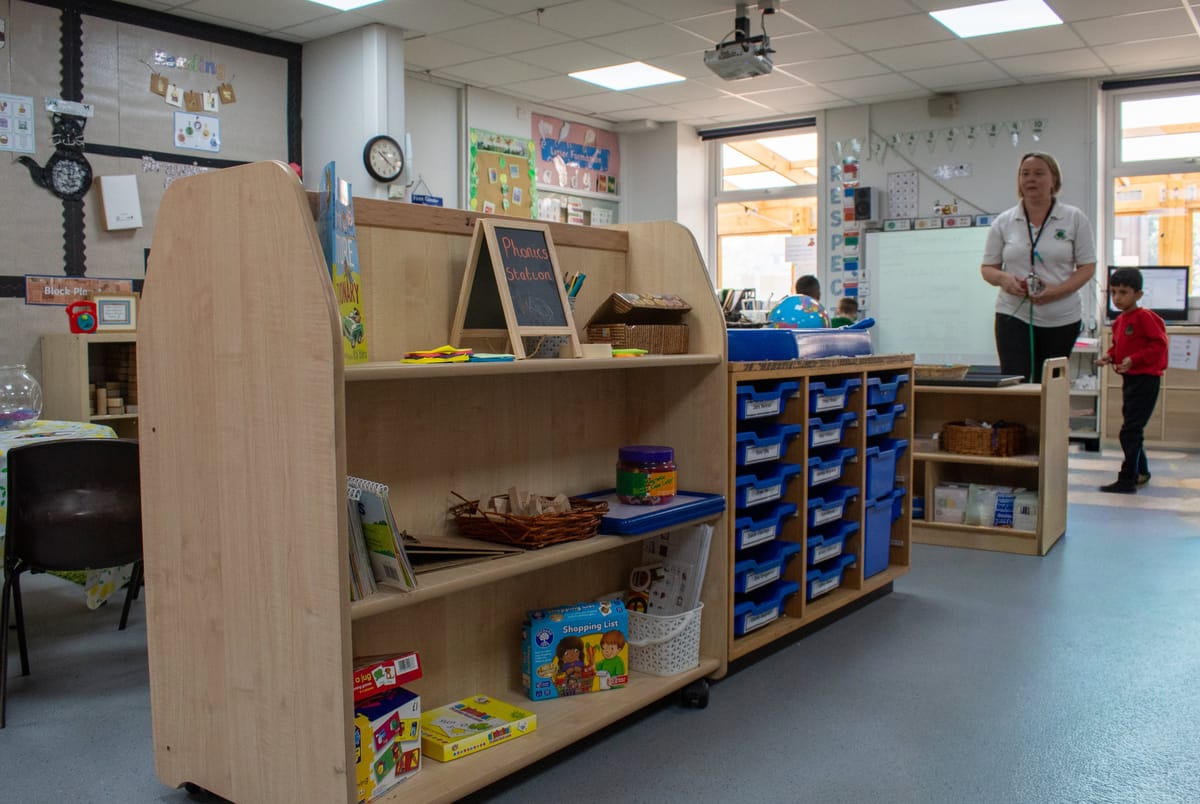
The options are as follows:
- I am proposing to open a new nursery that will be run by the school, either directly or through a wholly owned subsidiary company.
- The school (either directly or through a wholly owned subsidiary company) will be taking over a nursery previously delivered by a private provider on the school site.
- This project will result in a change to the school's official age range as recorded on Get Information About Schools.
- The project will result in a reduction in capacity of physical teaching space i.e. classroom space by over 30 places.
- The project will result in over 30 more new nursery places.
- None of the above statements apply.
Ensure that you check this list thoroughly and tick all options that apply to your project. This information will help the DfE understand more about the impact the project will have on your school and the local community. Remember to keep the answers honest and be 100% transparent!
Does your project require a Significant Change Approval?
For this question, you will need to either read the "Making Significant Changes to maintained schools" or "Making Significant Changes to an academy" document. Within these documents, the DfE highlights certain factors that would require your school to obtain a Significant Change Approval.
Once you understand what would be classified as a significant change for your school, all you have to do is select either:
- Yes
- No
If you selected "yes", then you will need to create a PDF doc that acts as a summary of your consultation. Keep in mind that this summary can't be larger than 500 words total, so keep your answer concise and straight to the point! Ensure that your summary includes:
- The people who were consulted (such as parents, staff, local community etc)
- The dates that the consultation(s) took place
- A brief overview of the consultation process
- The key outcomes and feedback received from the consultation
By including all of this information, you are providing a clearer picture for the DfE to understand more about your project and how it's viewed by stakeholders of the school.
If you selected "no" for the answer, then you're free to carry on with the application!
Section 4: Assessed Questions
Now that you have provided the Department of Education with all the information they need to understand more about your current situation and given them a rough idea of how the project will unfold, you're now heading into the assessed questions!
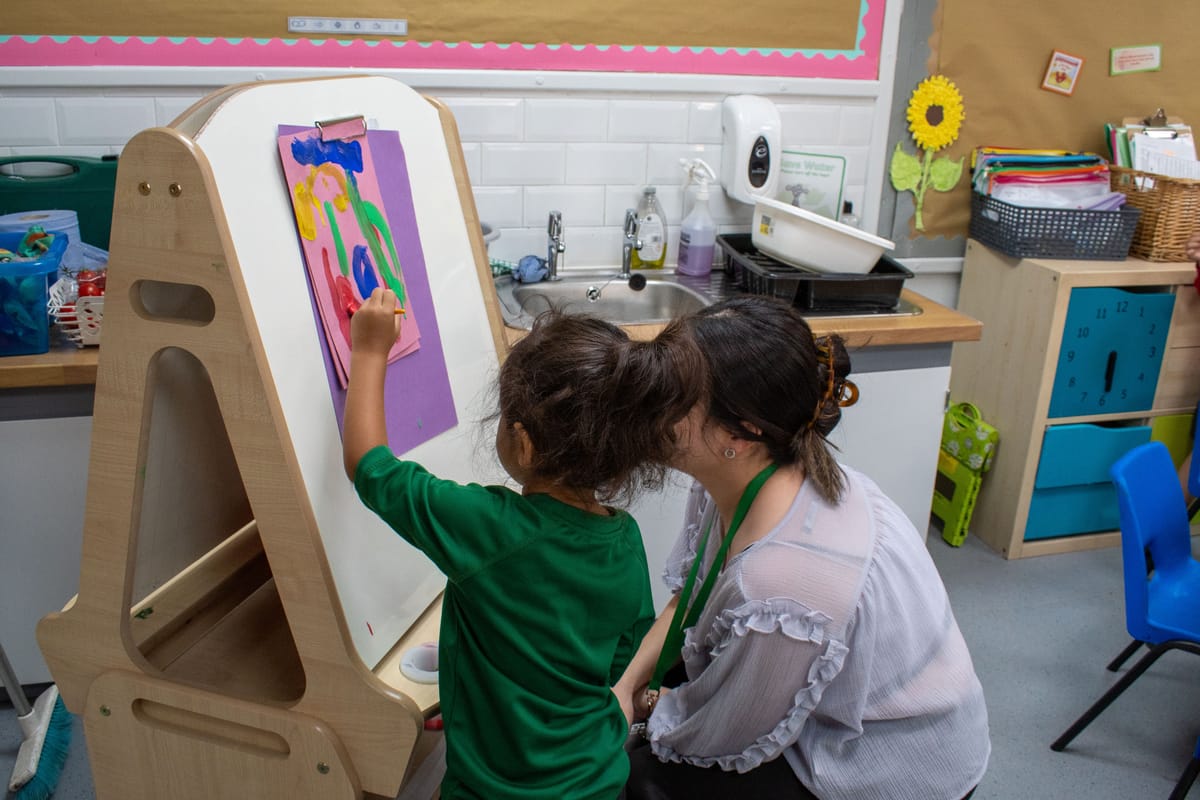
These questions are incredibly important and will often dictate if your application will be successful for the school-based nursery grant. This section is designed to showcase that your school has made thorough considerations during the planning of the proposed project and that your plan aligns with the Department of Education.
Remember: keep all of your answers concise and informative. Doing this will not only help the DfE get through your application quicker, but it also ensures that your displaying all of the important information in front of them without any padding.
Without further ordo, let's dive in to the questions!
Describe your project
For this question, the Department of Education are looking for answers that can hit these three bullet points:
- Provide a detailed summary of the proposed project, outlining any construction works and equipment required to deliver childcare places.
- How the proposed works mentioned in the above bullet point will help to provide additional nursery places.
- Mentioning AT LEAST one risk or dependency factor that could affect your milestones, including their likelihood, impact and how you plan to mitigate these delays.
Again, you need to make sure that your answer includes all three of these points for it to be successful, otherwise you aren't demonstrating that you have planned and made considerations for your proposed project.
Our advice would be to give a clear and structured summary of your project, ensuring your briefly describe the building works and equipment needed for your school based nursery. Then, explain exactly how each of these works will help you to create new nursery places (e.g. adding additional rooms, improving facilities).

Finally, ensure that you include at least one risk or dependency that could occur during your project (such as planning delays or contractor availability), explain how likely that risk/dependency is, what the impact would be on the project and how you'll manage or mitigate it.
Keep your answer factual, specific and avoid any vague statements. The assessors want to see a well-thought-through, deliverable plan!
Upload plans and site photos
We won't spend too much time on this section, as it's quite self-explanatory. The DfE are mainly looking for:
- The original floor plan
- The proposed floor plan
- Site plan (if applicable)
- Photographs of your current site
- Design photos (optional)
However, there's a few points to keep in mind with the files. Firstly, the files can NOT exceed 20mb. This means that any files that you have that are larger than this amount need to be compressed or cut down in size.
Secondly, the files must only be in PDF format. No other format will be accepted, so ensure that all of your files are formatted correctly to ensure that your application is successful.
Finally, all files must follow the following naming convention: URN_Name_of_plan. For example, if you were to upload your proposed floor plan, you would need to name it: URN_Proposed_Floor_Plan. You can only upload a maximum of one file for the first three, so don't worry about multiple names or numbering the files. For the photographs of your current site, you are allowed to upload up to 4 images and you can upload 2 files for your design photos.
So, make sure you follow the checklist below:
- The file is a PDF
- The file is less than 20mb
- The file has been named correctly
- You only plan to upload one file for the first three sections
- Make use of the 4 file spaces for photographs of current site and 2 spaces for design photos.
What sources of information have you used to assess the local need for early years childcare?
This question is a multiple choice one, so all you need to do is tick the following choices that best suit your answer to the question:
- Local Authority sufficiency analysis
- Conversations with the Local Authority
- Parent surveys or feedback
- Waiting lists or registration data
- Engagement with local childcare providers
- Community group feedback
- Ofsted data
- Other (you can specify up to a maximum of 100 words)
Again, the Department of Education are looking for evidence that you have carefully planned out your project to meet the criteria set by the department. Make sure you don't lie as evidence may be requested and it could lead to serious consequences.
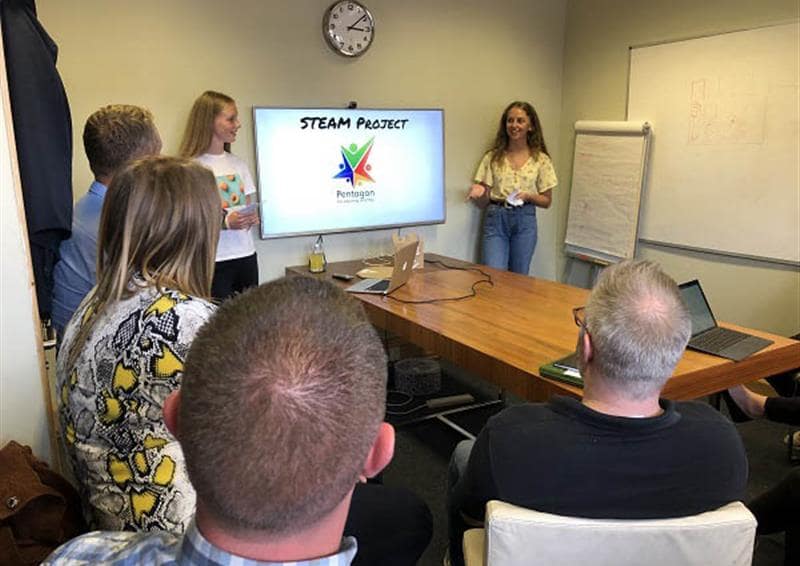
If you feel that you haven't done enough research, then now is the perfect time! Start reaching out to your local community and stakeholders and learn more about the availability of childcare. The DfE aren't looking for quick submissions, but are rather looking for more detailed and factual applications.
Identified gaps and shortfalls in local early years childcare
For this question, the DfE are looking for you to demonstrate three key things:
- There is a real local need for more early years childcare
- Your project is a practical solution to meet that need
- You have carefully considered potential risks and how to manage them
Just like all the previous questions, the assessors are wanting evidence-based reasoning and not just good intentions. Make sure that your answer remains clear, factual and specific to the question.
When answering this question, clearly describe the local childcare gaps or shortfalls using evidence such as local authority reports, population data, waiting lists, or parental surveys, specifying which age groups or types of provision (e.g., under-2s, SEND, rural areas) are affected.
Explain how your project directly addresses these needs, detailing the works, rooms, or facilities you will provide and the benefits for the community, making the link between problem and solution clear. Include at least one realistic risk or dependency (such as limited data, changing demand, or sustainability challenges), note its likelihood and impact, and describe how you will mitigate it.
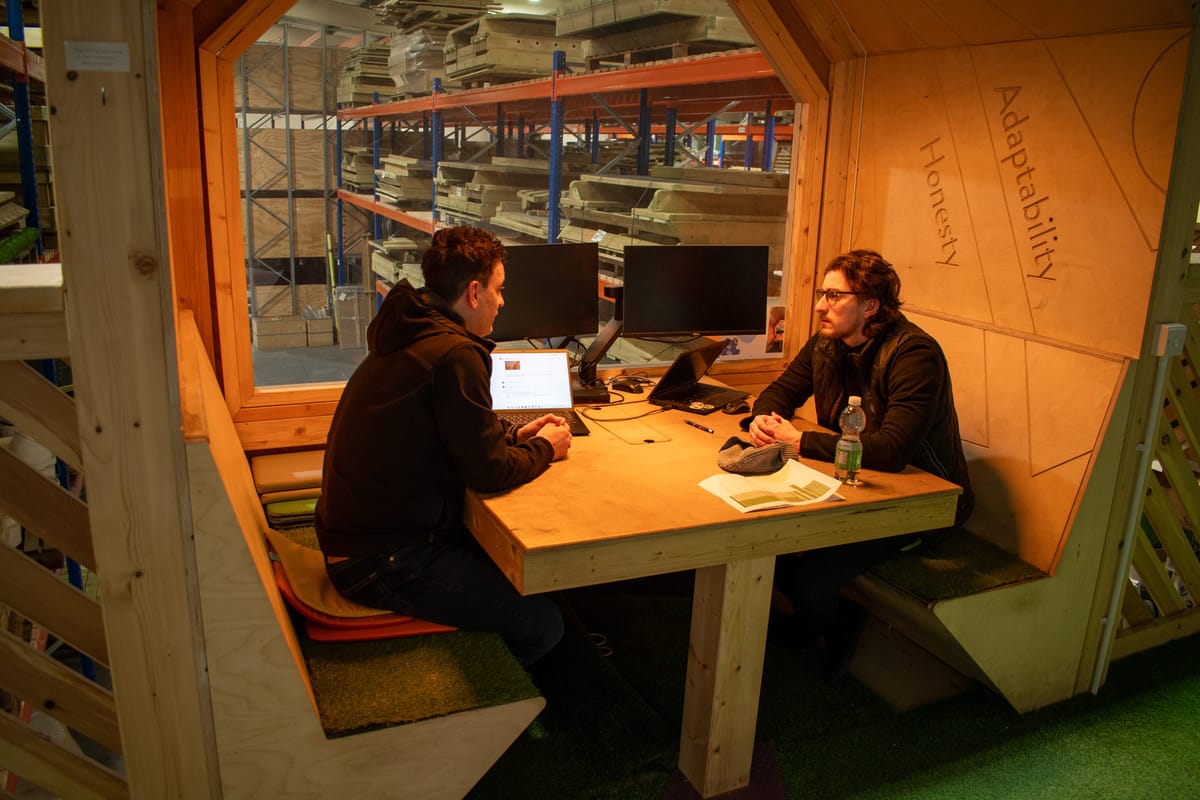
Keep your response concise, evidence-based, and structured, ideally using subheadings, and always connect your points to the delivery of new childcare places to demonstrate a well-planned, feasible project.
However, please be cautious with the amount you write as you have a maximum of 1000 words for this question. If it goes over, the DfE can disqualify you from this phase.
Upload your Local Authority Approval Form
A nice simple task to break up the intense questions! The DfE requires all applicants to submit their local authority approval form. You can find a copy of the form here.
The form is quite simple and requires your Local Authority Planning, Place and Provision lead to fill out all of the relevant information to your project. This is to ensure that your local authority is aware of the project and they are happy for your school to establish a school based nursery.
Once it's completed, make sure that the file has the following attributes:
- It's less than 20mb
- It's in a PDF format
- It has been named correctly (URN_Local_Authority_Approval_Form)
Doing this ensures that your file is uploaded correctly and avoids any technical problems that could occur!
Your approach to high-quality early years provision
When answering this question, briefly explain how your nursery delivers high-quality early years provision. Focus on key areas like learning and development, safeguarding, staff qualifications and training, curriculum planning, and how you meet children’s individual needs.
Highlight any approaches or methods that make your setting stand out, such as play-based learning, inclusive practice, or strong parent partnerships. Keep it clear, practical, and easy to read, avoiding overly formal language, and show how your approach ensures children thrive and are well-prepared for the next stage of learning.
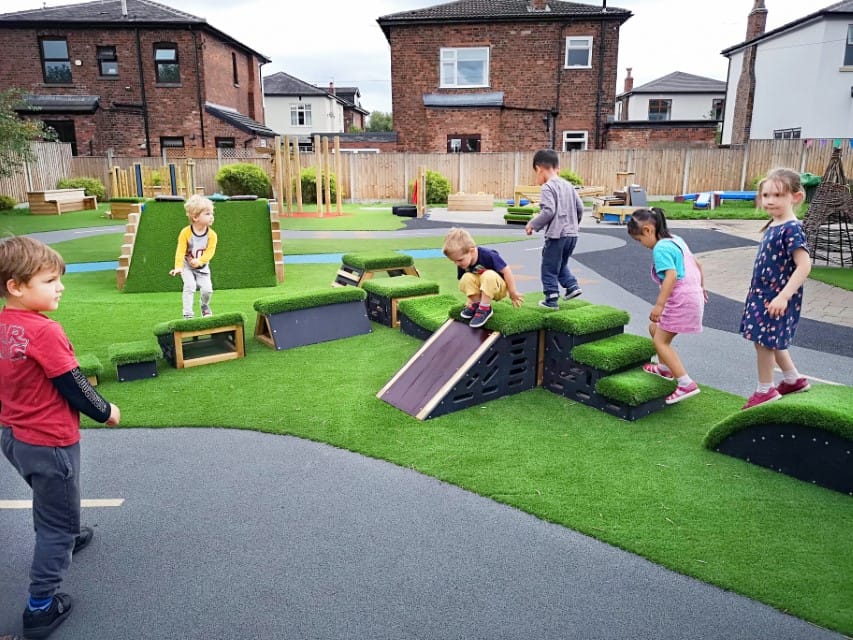
The Department of Education are looking for answers that demonstrate a strong understanding of the EYFS framework and recognition that children develop at different rates with a mix of teaching approaches. Include at least two practical example of how the setting will support the key areas mentioned above and provide clear evidence to show how your approach will positively impact children's development (such as observations or studies).
Support for disadvantaged, SEND & EAL children
For this question, describe how your nursery will give extra support to children who need it most, such as those from disadvantaged backgrounds, children with SEND, or those learning English as an additional language.
Give specific examples of how this support will be delivered, such as small-group sessions, one-to-one help, extra resources, or tailored learning plans. Then, explain the impact you expect on children’s learning, development, or wellbeing. Keep it practical and easy to read, showing that your approach is inclusive and designed to help all children succeed.
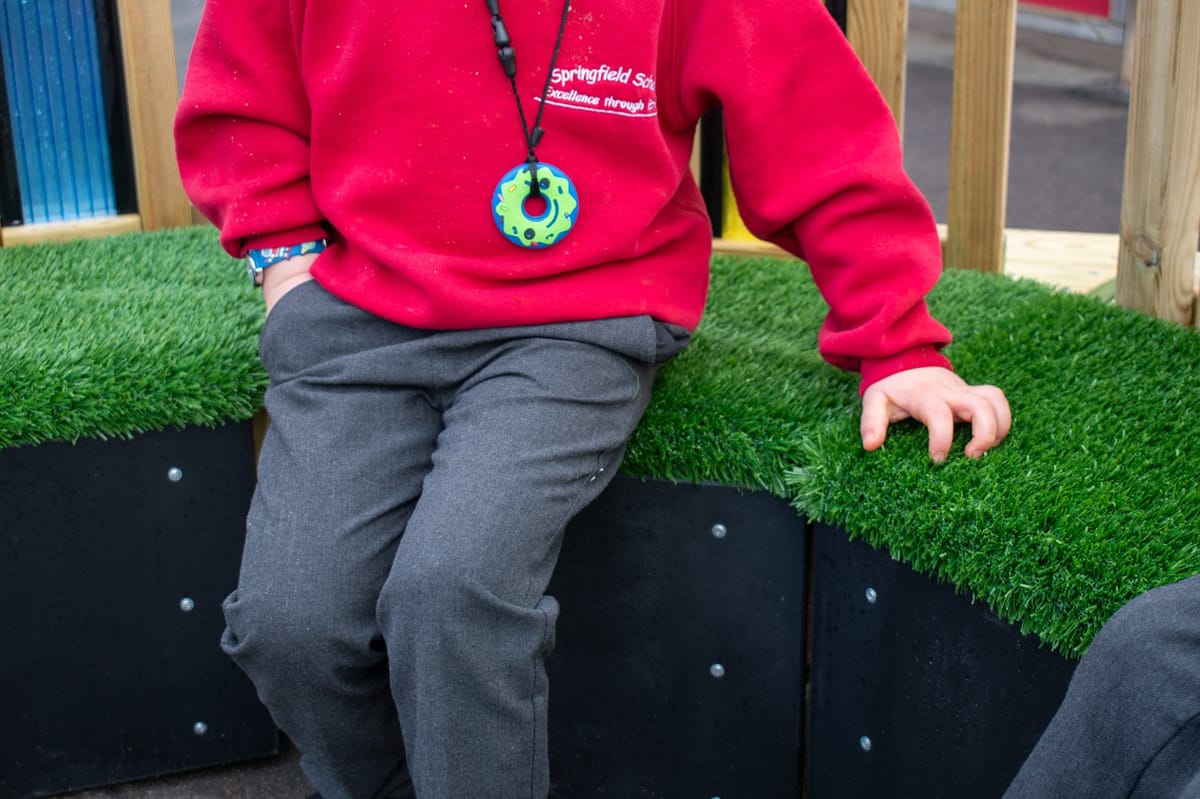
Pleas keep in mind you only have a maximum of 200 words, so keep those answers concise and straightforward!
Governance, staffing, sustainability & risks
Similar to the previous question, you are given another maximum word limit, but this time it's 1000 words. We can't stress how important it is for applicants to not go over this limit, so ensure that your writing software allows you to count words of certain sections to avoid any automatic dismissal.
Explain who will be responsible for running and managing the nursery and how it fits into your school’s existing governance and accountability structures. If the nursery will be part of the school, show how it links to current leadership, reporting, and oversight.
If you are working with a partner (such as a PVI provider), clearly describe the agreed arrangements and responsibilities. Keep it clear and practical, showing that you have strong leadership in place to manage the nursery effectively from day one.
To make things simpler, make sure your answer covers all of the following points:
- You mention who will govern and manage the nursery
- You explain how the governing/managing fits into your school's existing governance and accountability structures
- You explain how you will ensure that the nursery remains financially sustainable in the long term
- You mention at least one risk related to the deliverability and sustainability of your provision
How much DfE Capital Grant funding are you applying for?
Another nice and simple question to answer. Simply in put the total amount of funding you are looking to get from the DfE.
Ensure your answer is formatted correctly (such as: £120,000.00) and that your request matches the amount you require. The DfE will refer to the quotes you have submitted for equipment and will check if the costs balance out with your request.
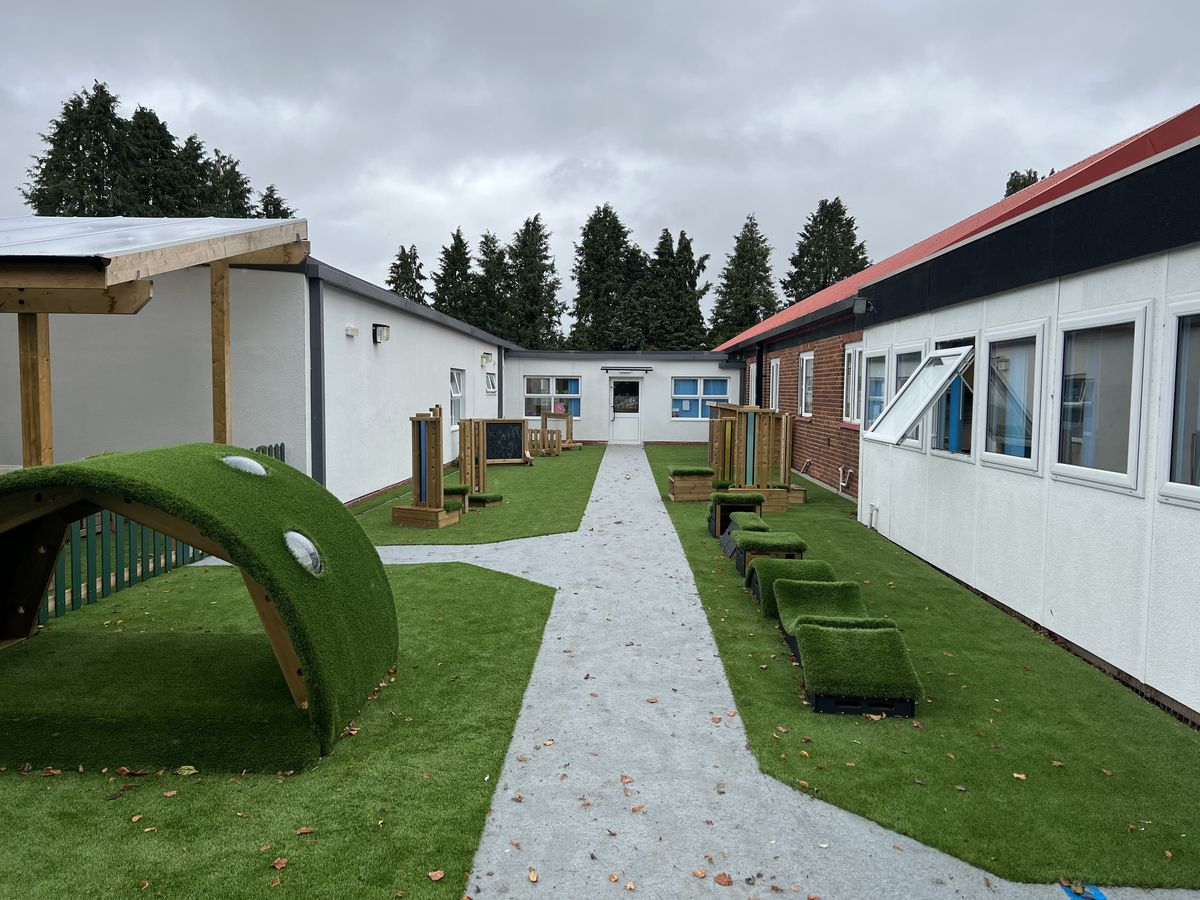
If your request is larger than the amount, there is a chance you could be automatically declined and suspected of fraud, so please ensure your calculations are entirely correct and that your quotes all add up to the number you have specified.
Will you be receiving additional funding from other sources?
A simple yes or no question. As mentioned in our blog about how to apply for school-based nursery phase 2 funding, the DfE has explicitly stated that projects that have multiple sources of funding will have a better chance of being accepted.
If you select "no", don't worry! It doesn't mean you will be automatically denied the grant, but we would highly suggest to look into other sources of funding to see if you can take your nursery provision project to the next level.
However, if you answered "yes", then you will be presented with the following questions:
- How much additional funding will you receive from other sources (make sure you answer it like: £50,000.00)
- Who is providing this additional funding (you have a limit of 50 characters)
If you have multiple sources of funding, you should be able to fit them all into the relevant fields, but if you find yourself struggling, then please contact the Department of Education on what to do next.
What is the total internal floor area (m2) that will be created or refurbished as part of this project?
At this point, we're starting to get to the simpler questions (yay)! For this question, all you need is to give the total internal floor area that will be used within your project. Whether you are creating a new space or refurbishing an old one, the DfE needs to know how big your nursery will be.
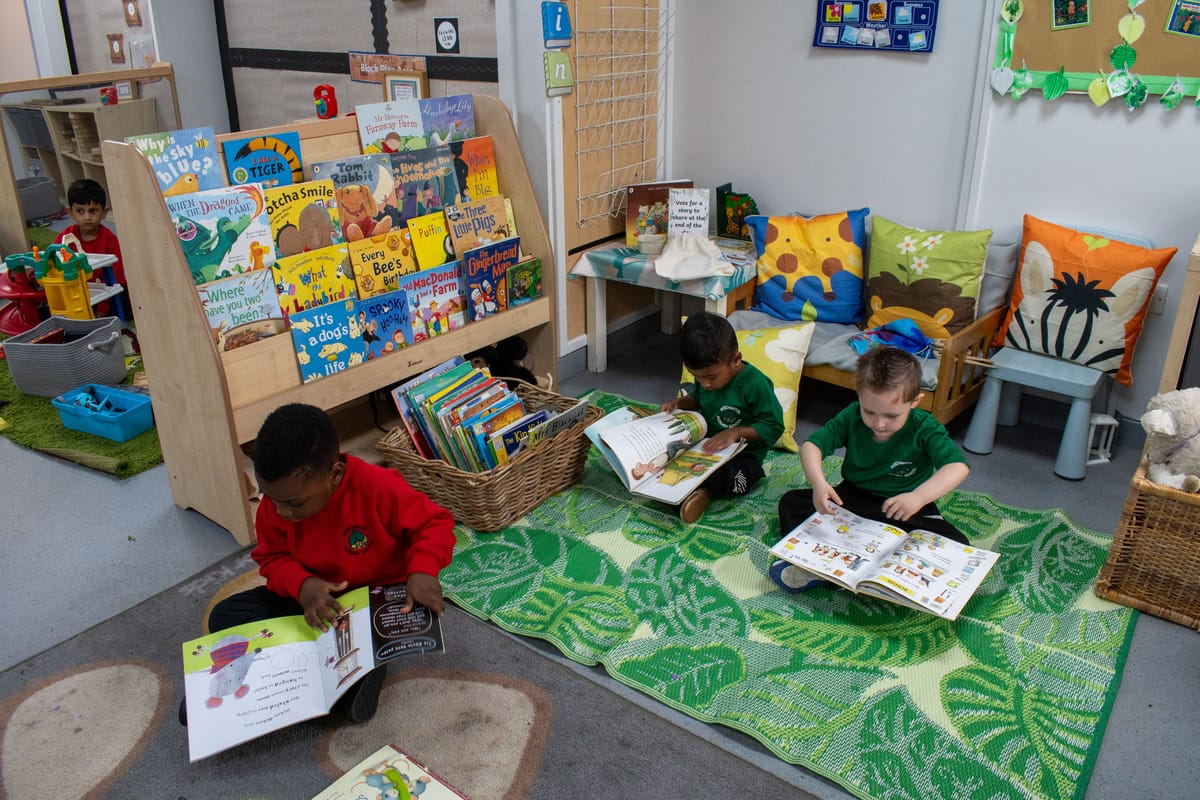
Don't worry about adding the "M²" measurement beside your answer. You only need to input the numerical value (such as "40").
Breakdown of the project costs
As we mentioned before, when you input the amount you are requesting from the grant, the DfE will be comparing it to quotes and other sources to ensure that your costings match the requested amount. This question is where to supply the DfE with your total costings.
It's important to know that this breakdown should be detailed, meaning you cover all aspects of your project, such as:
- Building works
- External works
- Abnormal items
- Furniture, fixtures and equipment
- Survey and design fees
- Technical advisor fees
- Risk allowance
- Irrecoverable VAT (if it's applicable)
If you are using another source of funding in combination with the grant, then you also need to include those sources of funding and the costs acquired from them. The DfE want to see the full capital cost of the project. Any non-capital expenditure is ineligible for the school based nursery grant, so ensure that only eligible costs are listed.
You can find more information on in-eligible costs by reading our Ultimate FAQ Guide on the School-based Nursery Grant, or by viewing the official School-based Nursery Guidance.
New nursery capacity by age group
For this answer, you will need to provide the number of children your new nursery will take on once it's fully operational. Even if you are staggering the opening of your nursery, the Department of Education want to know how impactful your nursery will be.
Your answer should be in a number format and provide information on the following groups:
- Under 2 years of age
- 2 years of age
- 3-4 years of age
- Total capacity
The numbers you provide should reflect the maximum number of children you will have at any given time in the school-based nursery. Do not double-count place used in both morning and afternoon sessions and remember that your nursery should aim to deliver at minimum 5 additional childcare places.
It's important to note that in exceptional circumstances, the DfE may consider projects that deliver fewer than five additional spaces. In these cases, they will be subject to thorough processes, during which the DfE may seek clarification from applicants.
What will be the opening times of the nursery provision?
A nice and simple one! All you need to do is provide the term-time opening hours of the week. You will need to provide hours for:
- Monday
- Tuesday
- Wednesday
- Thursday
- Friday
- Saturday
- Sunday
If your nursery will not be open on a certain day (e.g. Sunday), then you can leave the section blank and continue with the application. The more your nursery is open, the higher the chance it will be approved by the DfE.
Will your nursery offer holiday childcare?
To answer this question, all you need to do is select yes or no. If you select "no", you will be taken to the next section. However, if you answer "yes", then you will need to repeat the process for the previous question, explaining what hours you will operate throughout the week.
Again, it's seen favourably if your nursery can offer holiday childcare, so if you believe you can do it, we would suggest including this in your application.
Quotes for work
The Department of Education want all applicants to submit quotes for the work that needs to be carried out. The answer format for this question is free text, meaning you need to type the following bits of information:
- The company name
- Total estimate
- Date quote was received
- Any additional information
It is suggested that schools also try getting multiple quotes for each section to demonstrate that they have searched the market for the best products possible.
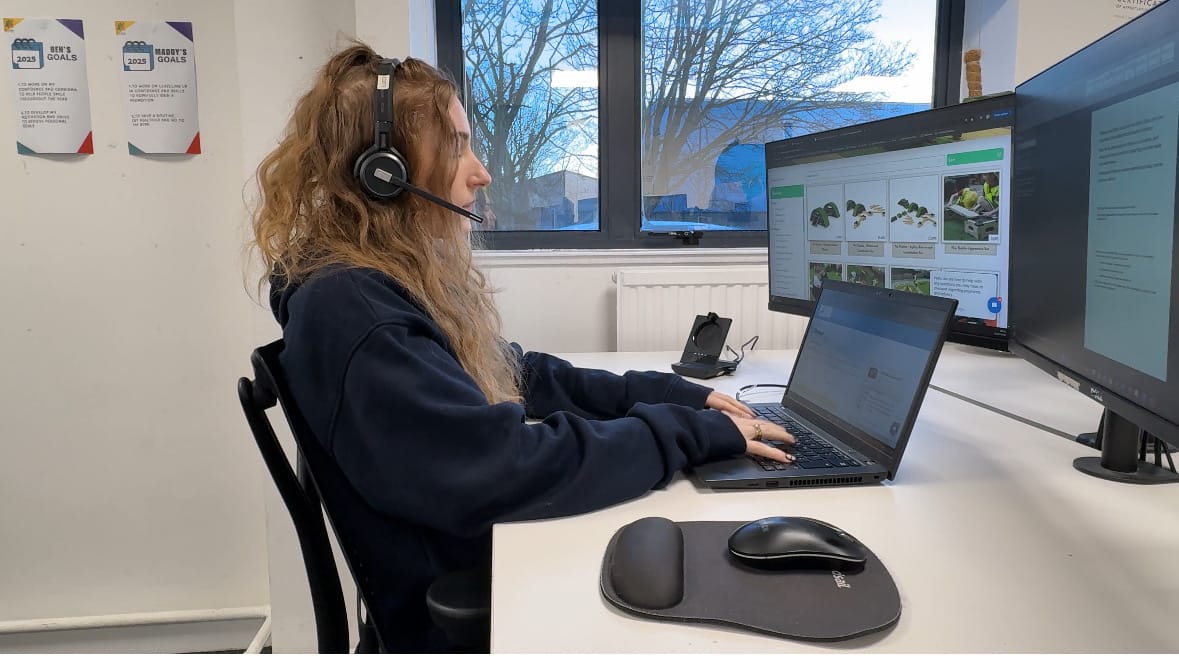
However, only one quote has to be submitted, so you can always ignore the optional ones.
Upload detailed cost breakdown
We've made it to the last question! To answer this question, you will need to supply either:
- A detailed cost breakdown prepared by a suitably qualified professional (such as a RICS-registered Quantity Surveyor), if the project has not been tendered yet, or
- A detailed cost breakdown from your preferred contractor, if a competitive tender exercise has already been undertaken and a summary of your tender process, including procurement route and contract form
It's completely up to you which option you decide to choose, but we noticed a lot of schools went with option one during phase one of the school-based nursery grant. Similar to other file formats, please ensure your breakdown is:
- Less than 20mb
- In a PDF format
- Named correctly (URN_Detailed_Cost_Breakdown)
- Is just a singular file
Section 5: Confirmation and declaration
We won't spend to long on this section, as it's important that you read the fine-print of the school-based nursery grant to ensure that you are happy to proceed. If you read something and you are not sure about it, please contact the DfE as soon as you can so you don't delay your application too long.
If however, you are happy with all of the terms provided by the grant, then you can move on to the final step of the entire process!
Step 4: Submit Your Application!
With all the answers you need at your disposal, simply visit the DfE Online Application Service and begin the application. All you will need to do is copy and paste over the answers you have written on the template and upload you files on the online application too.
Once you've made it to the end, simply press submit and you should receive a confirmation stating that your application has been submitted! Please keep in mind that once the application is submitted, you will no longer be able to alter or edit the application, so make sure you have checked every aspect to ensure you are happy with it.
The Waiting Game...
As the Department of Education assigns two assessors to read through your application, you'll be waiting between 6-9 months before you hear if you were successful or denied. The key is to be patient.
The Department of Education has already mentioned that they won't provide updates on the status of applications and that all applicants will have to wait until April 2026 before they hear anything. If it gets past this date (without the mention of the timeframe being altered by the Government) and you haven't heard anything, it's safe to say you were unsuccessful this year.
Start Applying Today!
Think you're up to the task of getting your hands on the grant that can completely transform your school and local community? If so, why not start looking around at suppliers and see what they can offer you!
Here at Pentagon Play, we've had the pleasure of working with hundreds of nurseries across England, Wales and Scotland, so it's safe to say we know what makes a great nursery. We'll work closely with you and help you design a space that not only helps children flourish, but can make the most of your space.
From out-of-this-world sensory play equipment to durable and high-quality indoor classroom furniture, our company has prided itself on supplying some of the best nursery playground and indoor equipment in the market.
Not only can you be assured you'll get the best quality equipment, but our team also create outstanding 3D visualisations, which can also be used to pad out your application and improve the likelihood of being accepted. We don't just supply indoor and outdoor furniture, but we help nurseries create the environment of their dreams.
For more information, make sure you check out our other SBN related pages and see how we can help you start your application today!
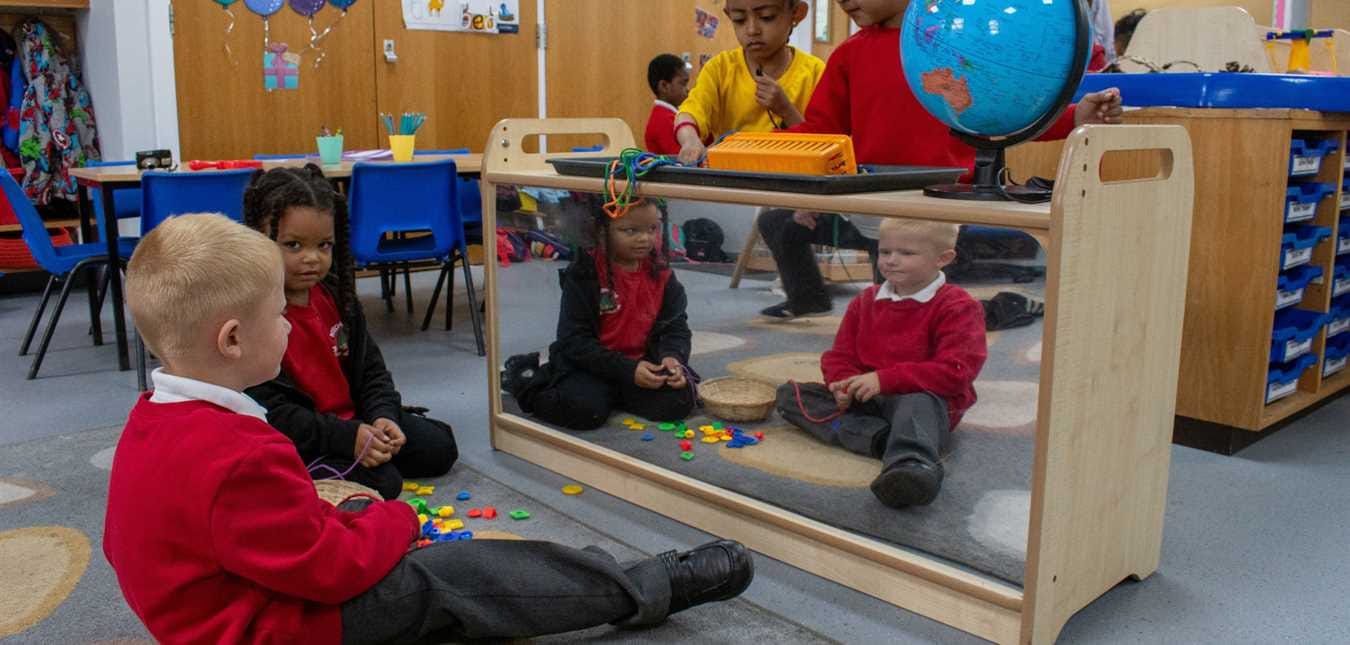
.JPG)

